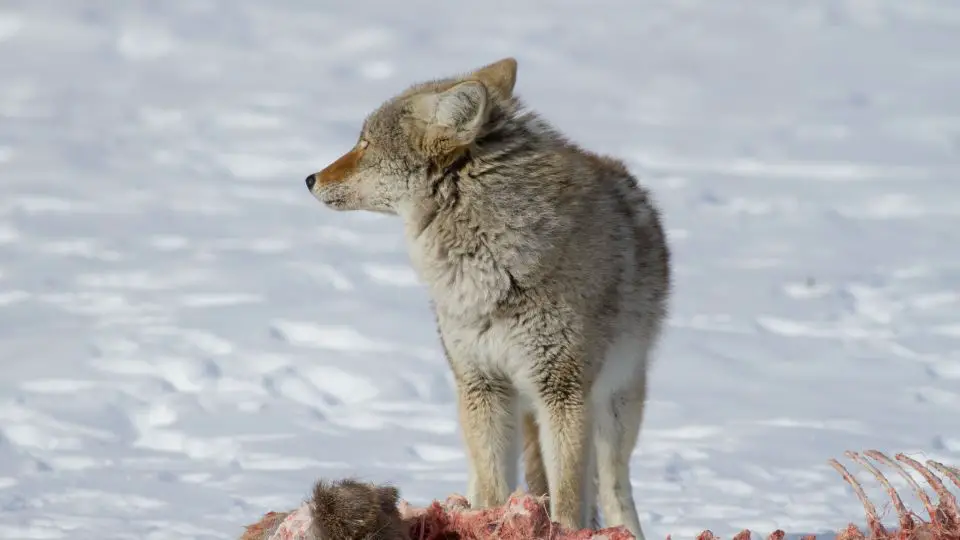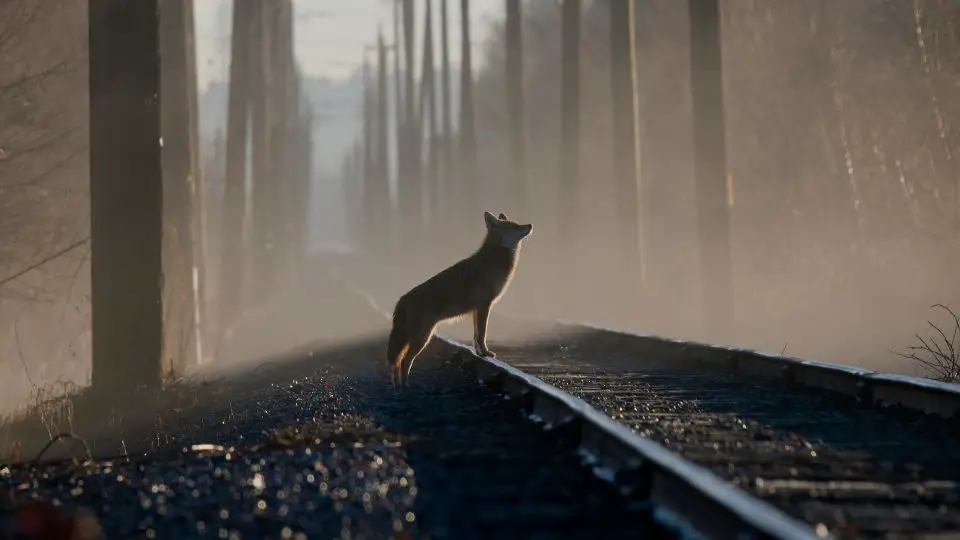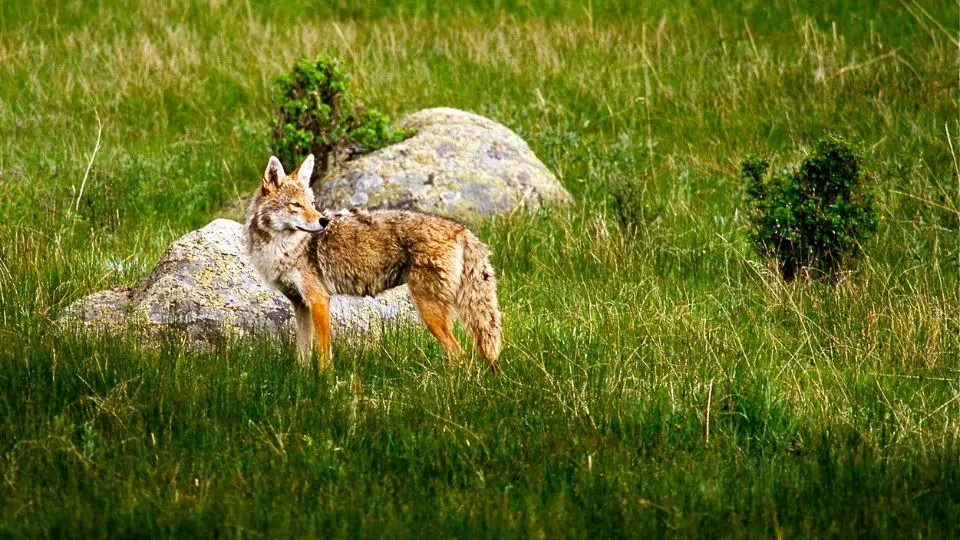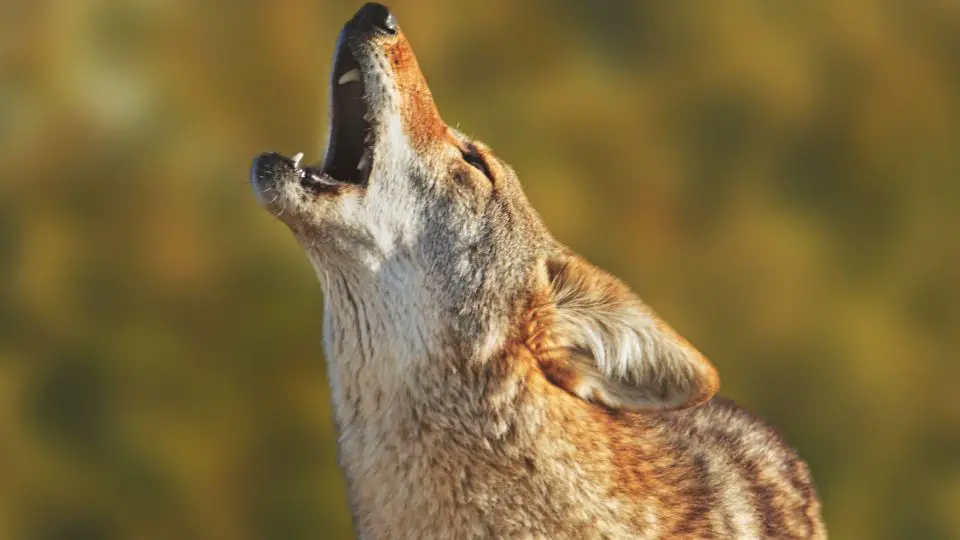Coyotes can produce a range of sounds, from guttural growls to staccato yips. However, the most infamous sound a coyote makes is its signature howl—a loud, screeching, and eerie noise that varies in pitch and volume.
You’re more than likely to hear a coyote before seeing one. This is primarily because of their vast and varied series of vocalizations. Coyotes are pack animals, coordinating among themselves—or as a means of intimidation—through their distinct howls.
These modes of communication can travel faraway distances and up to 1,000 yards. It can reach as far as suburban areas. Read below about coyote sounds, including all the yips, the yaps, and everything in between.
Table of Contents
What Kind of Noises Do Coyotes Make?
Coyotes are one of the most language-rich animals. They communicate using a complex range of sounds, which includes growls, barks, yelps, woofs, huffs, yips, and whines.
Coyotes use these series of sounds for different purposes. For example, they might yip as a greeting call when they meet a pack member. On another occasion, they may growl to intimidate predators and other coyotes.
For most people, the howl is one of the most iconic sounds this canid makes. Coyotes produce two main types of cries: the lone howl and the group howl.
Lone Howls
Lone howls are high-pitched barks made by a single coyote. Unlike wolf howls which are drawn out, lone coyote howls are punctuated with sharp drops, staccato, and stops.
These sounds vary in pitch to give the impression that the pack is more extensive than it really is. These sounds can also be used to signal a regroup with the pack.
Group Howls
Group howls, on the other hand, are noises created by multiple coyotes at once. They can signal a threat, mark territory, or signal nearby family members that their hunt has been successful.
Besides those two main howls, coyotes also implement a wide range of other sounds depending on the situation and utility of it. Their names don’t translate to “song dogs” for nothing!

Why Do Coyotes Scream at Night?
Coyotes scream at night for two reasons:
- To reunite the family of four or five coyotes after a period of solitary hunting.
- To mark a territorial boundary that other coyote families shouldn’t cross.
While coyotes aren’t strictly nocturnal, coyote hunting activities typically occur during the night. You’re also more likely to hear these canines between January-March and October-January.
This is because the former period is their mating season, while the latter period is the time when juvenile coyotes venture out on individual hunting trips.
What Does It Mean When the Coyotes Are Yipping?
A yipping noise from Coyotes is to communicate with other coyote families. It serves as a warning sign for them not to get too close to their established territories. If coyotes yip within their in-group, it’s more of a sign of endearment upon seeing their kin.
How Do You Identify a Coyote Sound:
Here’s a variety of sounds a coyote makes and what they symbolize:
- Growl: Used as an intimidation tactic for a close-range threat.
- Bark: Used to defend a den or alert its pack close by.
- Yelp/Whimper: Expresses surprise and submission; for play.
- Woof: Used as a low-intensity alarm.
- Huff: Used to signal frustration over carrion within kin.
- Yip: Used to warn other coyotes not to approach.
- Scream: Used to reunite family or intimidate faraway predators.

How Close Are Coyotes When They Howl?
A coyote’s howl has a radius of approximately one to three miles. This means that if you hear a coyote howling in the middle of the night, there’s a chance that it’s within range of your property.
However, measuring the exact distance can be tricky. Coyotes can change the pitch of their howls at a whim. This can make it seem that there are many coyotes surrounding you when there’s really only one or two.
Couple that with the hollow tone of a coyote call, and pinpointing the precise distance can be difficult. But if your ears can pick up on coyote sounds at night, they’re likely not farther than three miles away from where you’re presently located.
Do Coyotes Howl Alone?
Coyotes are capable of howling both in solitude and in a pack. Coyote packs can accommodate as many as seven adults and their offspring for that year.
Adult coyotes usually initiate the howls, followed by the juveniles. However, a coyote can also howl in solitude to mark territory, call their kin, or warn off other animals near it.
The unique thing about coyotes is that a single coyote howling can sound like a pack of coyotes howling at once. This effectively tricks humans and animals into thinking that there’s a large group of coyotes, which is an effective method to drive off intruders.
Do Coyotes Sound Like Barking Dogs?
When a coyote barks, it can resemble a domesticated dog. However, coyotes don’t only bark when they vocalize. They often switch it up and throw in some howls, yips, and other drawn-out barks every so often.
If you hear this mix of different sounds, it’s a sign that you’re dealing with a coyote, not a stray dog.
How Can You Tell the Differences Between a Wolf Howl and a Coyote Howl?
A wolf howl is heavier, deeper, and more sustained than a coyote bark. It’s also lower in pitch and carries further distances. They’re also more drawn-out and richer in tone.
Coyotes, on the other hand, have a higher-pitched howl that is accompanied by sharp rises and dips. They may sometimes mix yips and yaps in between howls to produce a more lyrical melody as if they are singing.

What to Do if You Identify a Coyote Sound?
You should exercise caution if you identify a coyote sound in your vicinity. Coyotes are known to be aggressive, and they’re not afraid to attack humans if needed.
If you have pets and livestock, make sure to keep them indoors at night. Coyotes are known to kill dogs and cats, so keeping your pets inside will help safeguard them from these predators.
If you’re stuck indoors, you don’t have to do any immediate coyote-deterrent measures when you hear a coyote. If you’ve heard coyote vocalizations for weeks, you can consider setting up a light-activated sensor in your yard to ensure your property is well-guarded.

